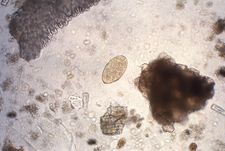Triclabendazole MDA ‘virtually’ eradicates human fascioliasis in Bolivia
Click Here to Manage Email Alerts

Researchers who planned a Fasciola treatment trial in 2017 with triclabendazole, or TCBZ, in the Bolivia Altiplano — a region previously known to have the highest prevalence and intensity of human fascioliasis— were not able to identify enough people with the condition.
Jaime Soto, MD, professor emeritus of dermatology at the National Foundation of Dermatology in Bolivia, told Infectious Diseases in Children that the dramatic decline in human fascioliasis was a result of the Bolivian Ministry of Health’s mass drug administration (MDA) program with TCBZ. Soto and colleagues wrote that this program was conducted between 2008 and 2016 for all residents aged 5 to 65 years. Those who participated in the program were treated with one 250-mg dose, usually in September or October, and children were treated in schools.
To identify participants for the 2017 trial, stool samples were collected from 5,243 residents of four regions who took part in a 1990 stool survey and eventually the TCBZ MDA program. Coverage of the MDA program ranged between 55% and 94% from 2009 to 2014. In 2016, the researchers said coverage was 87%, with more than 500,000 people treated that year.
In one highly endemic region known as Batallas, Soto and colleagues said the prevalence of disease dropped from 12.6% in 1999 to 1.05% in 2017 (P < .0001). Prevalence in another endemic area — Huacullani — fell from 26.9% in 1997 to 0.7% in 2017 in the neighboring town of Tiahuanaco (P = .001).

The researchers said other efforts by the Bolivian Ministry of Health might have contributed to the decrease in fascioliasis in the Altiplano, including annual deworming with albendazole and mebendazole for the last 4 decades, as well as recent improvements in housing and water quality and the creation of new health centers, but the likeliest reason is the MDA.
“For sustained elimination of Fasciola infection, past efforts of the Bolivian Ministry of Health need to be maintained in the future and coupled with efforts to control the intermediary and animal hosts of F. hepatica,” Soto said. “With some local adjustments, this strategy could be successfully applied in other endemic areas.” – by Katherine Bortz
Disclosures: Soto reports no relevant financial disclosures. Please see the study for all other authors’ relevant financial disclosures.
